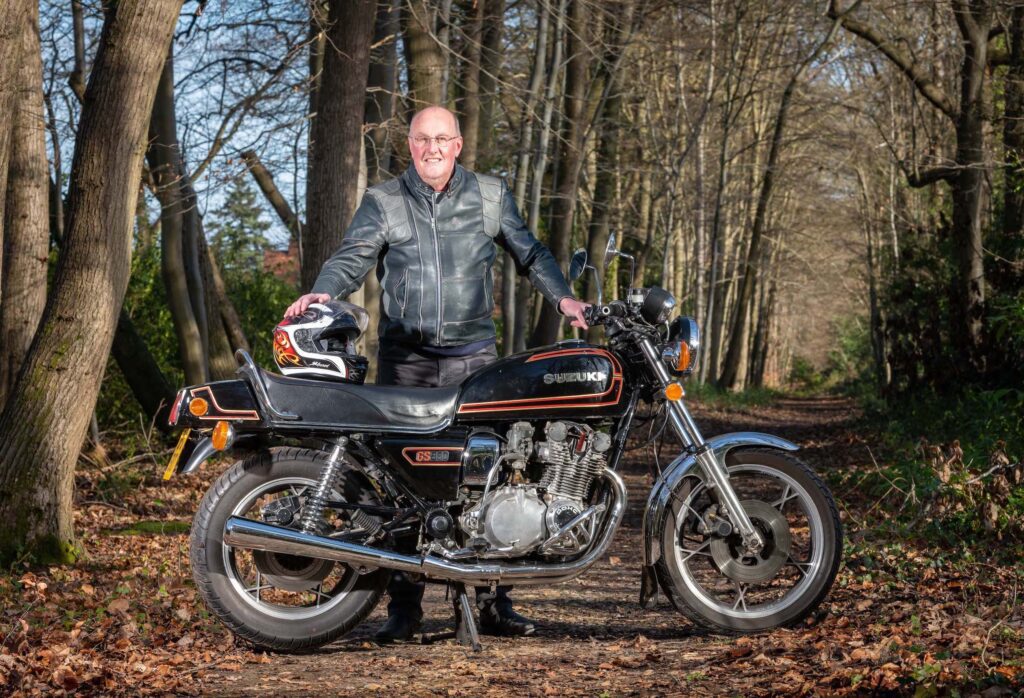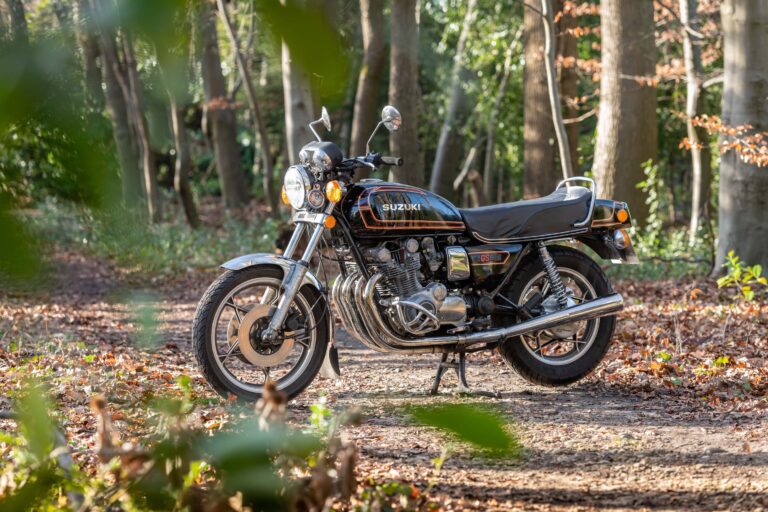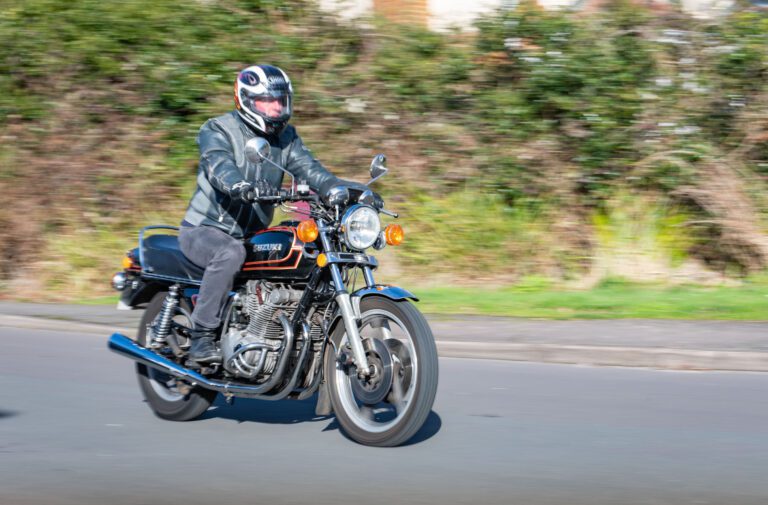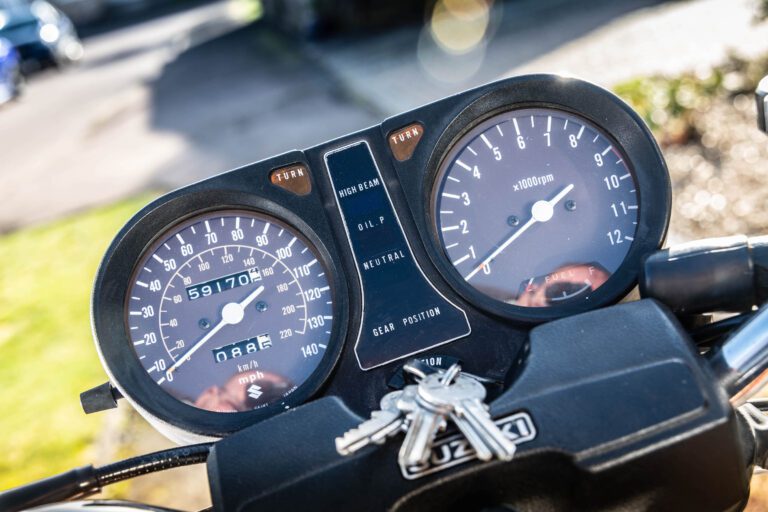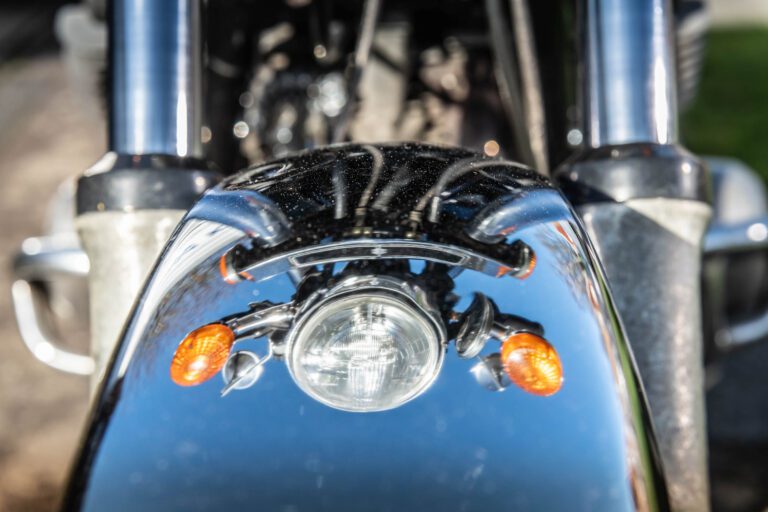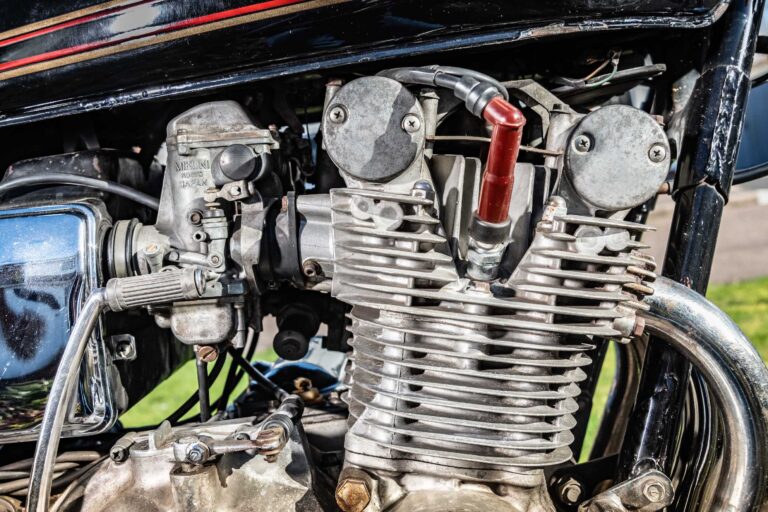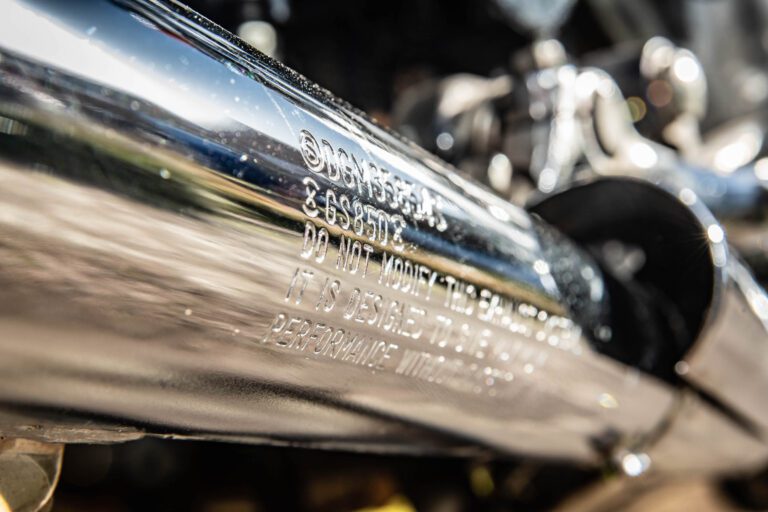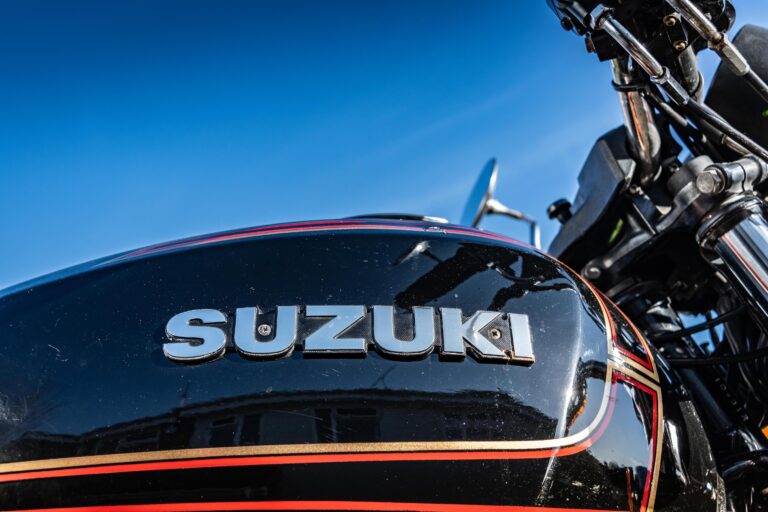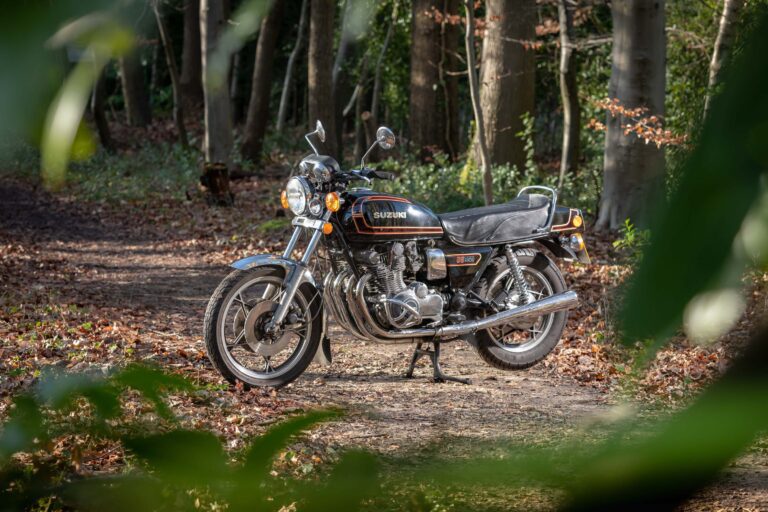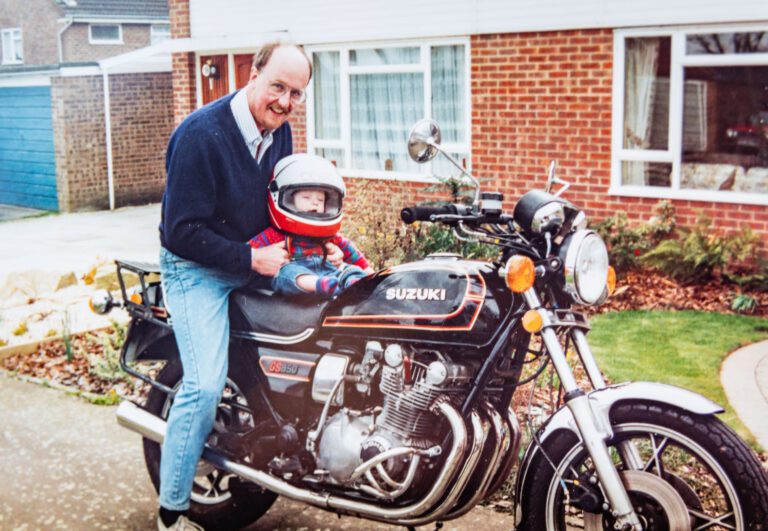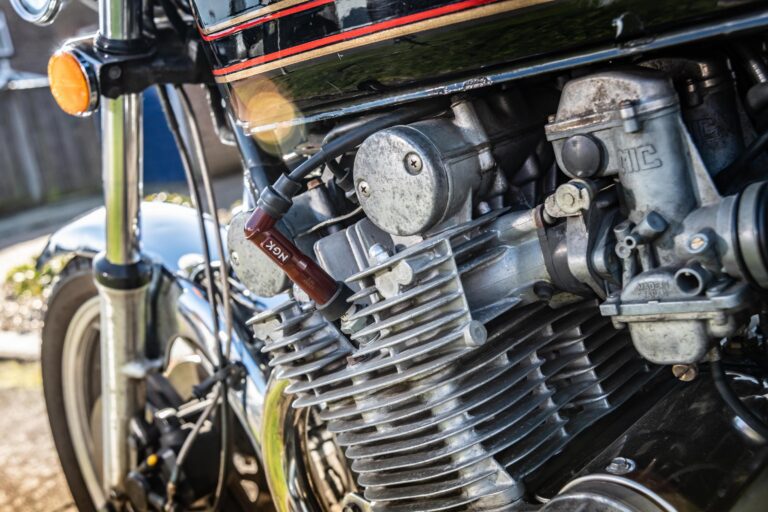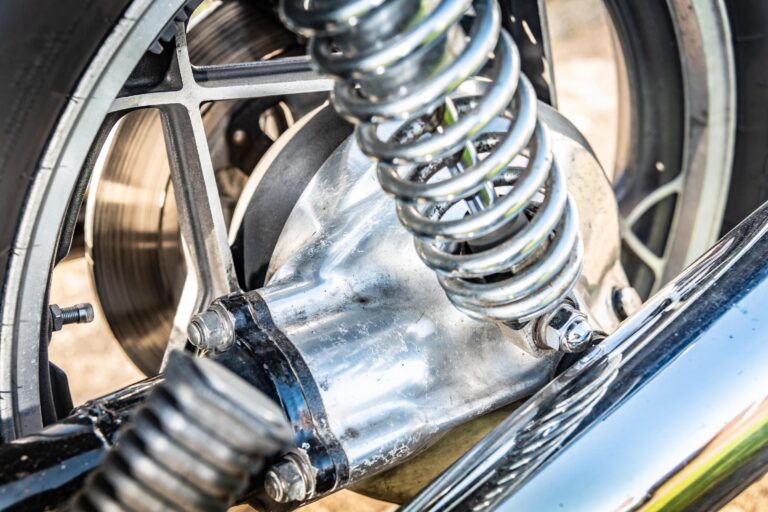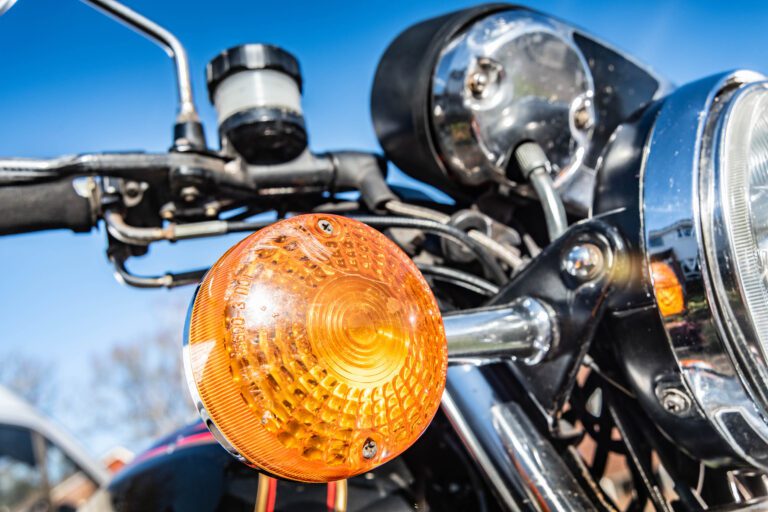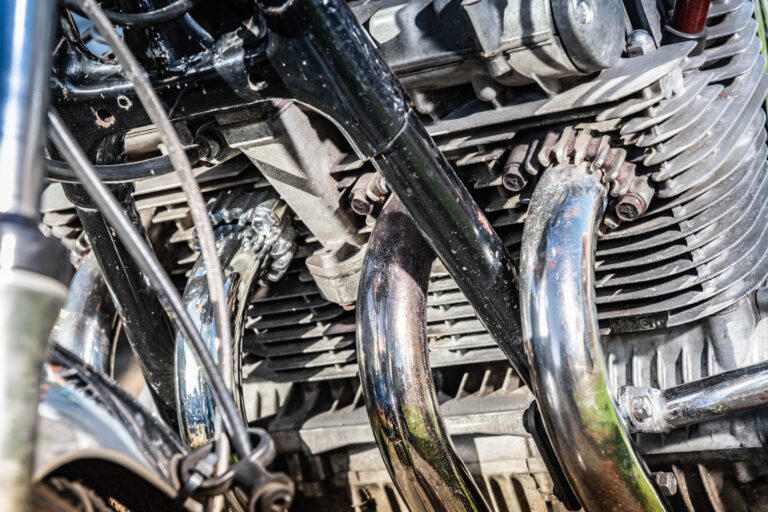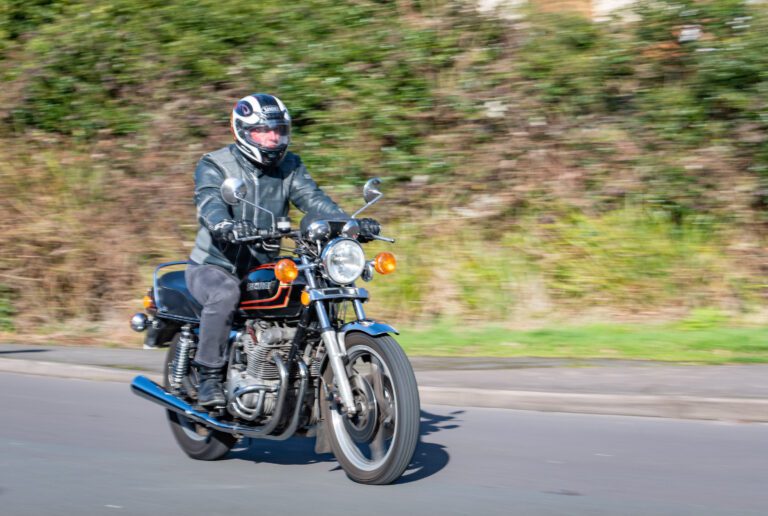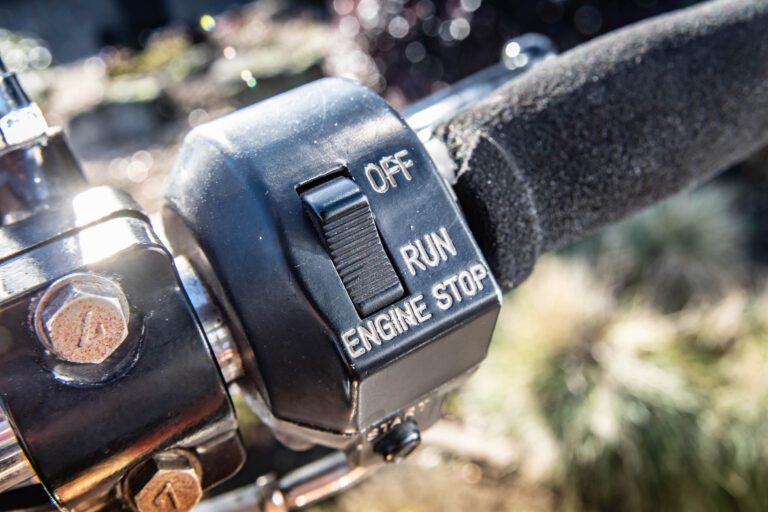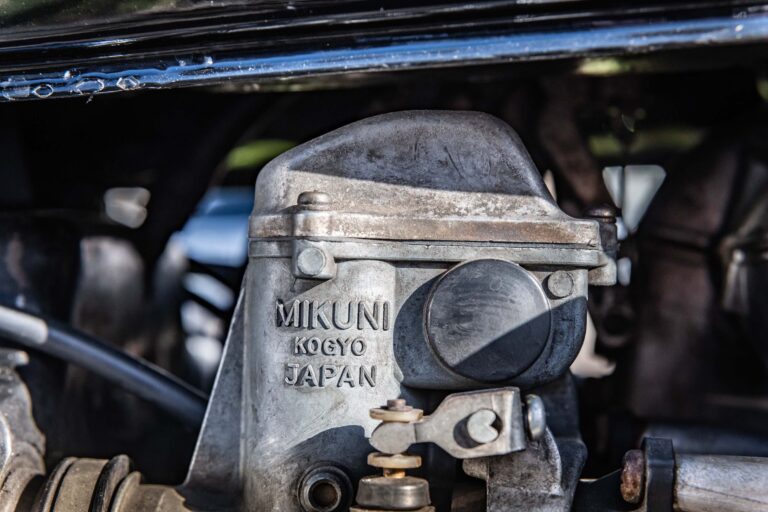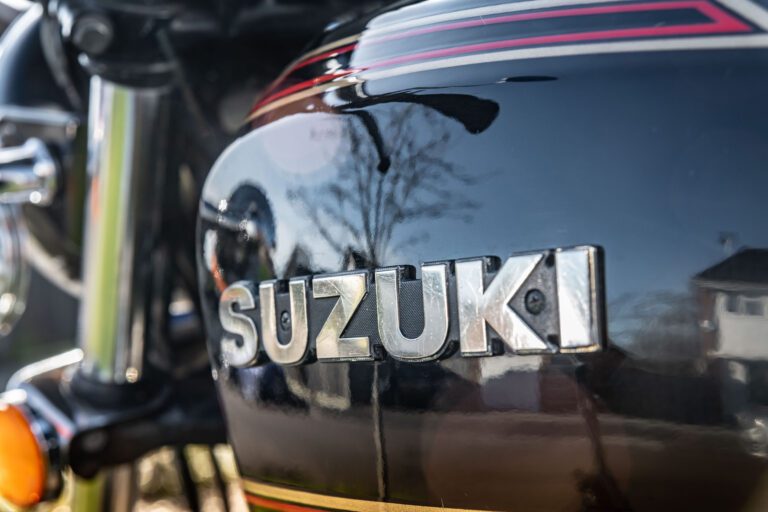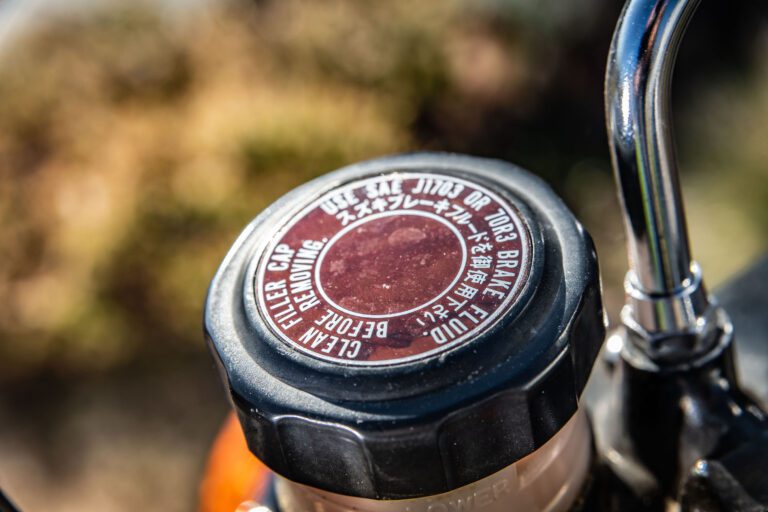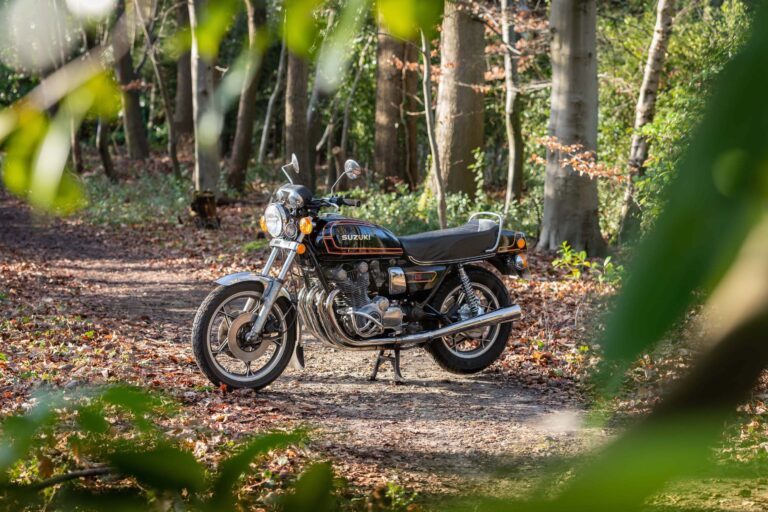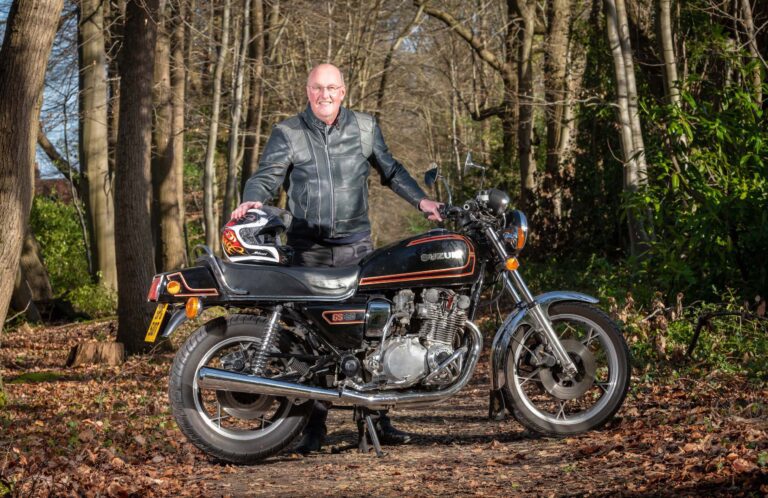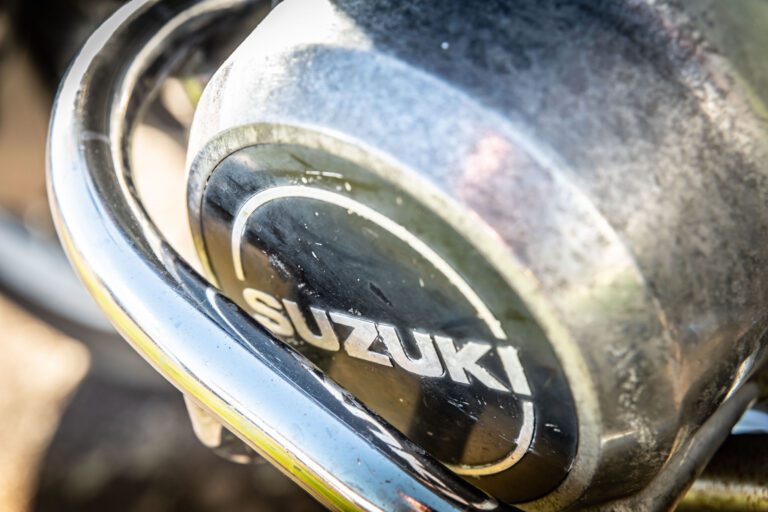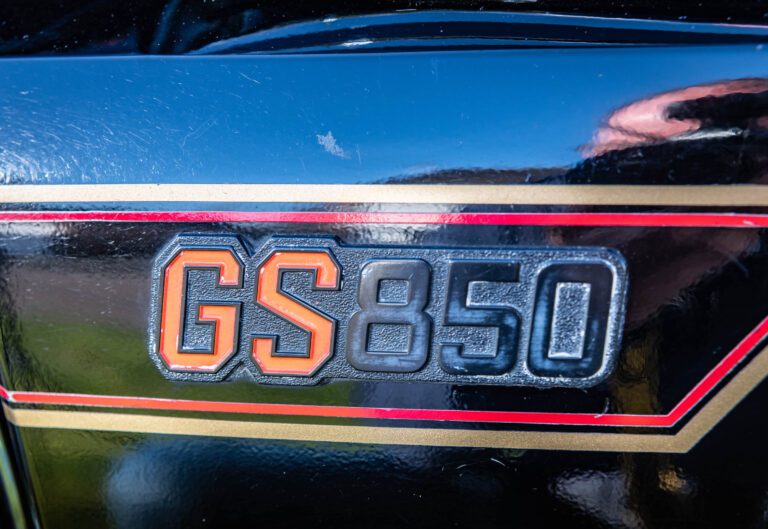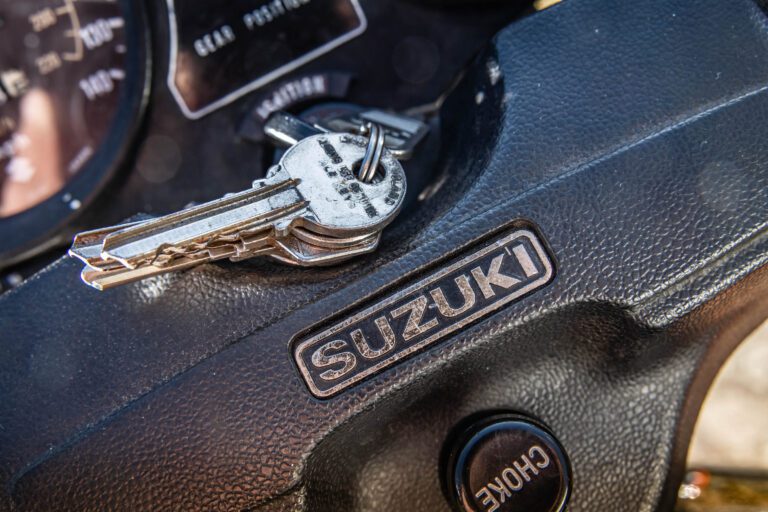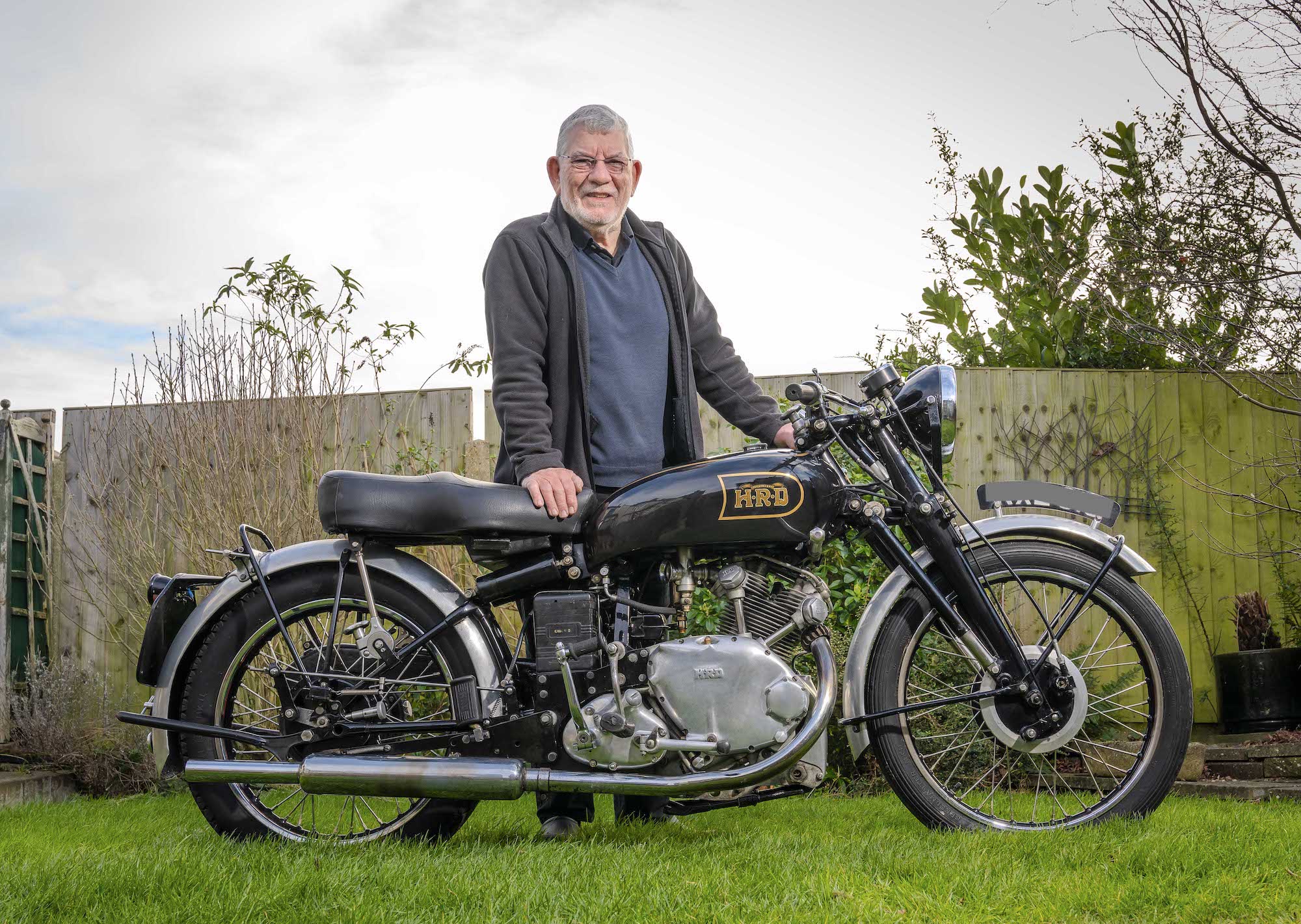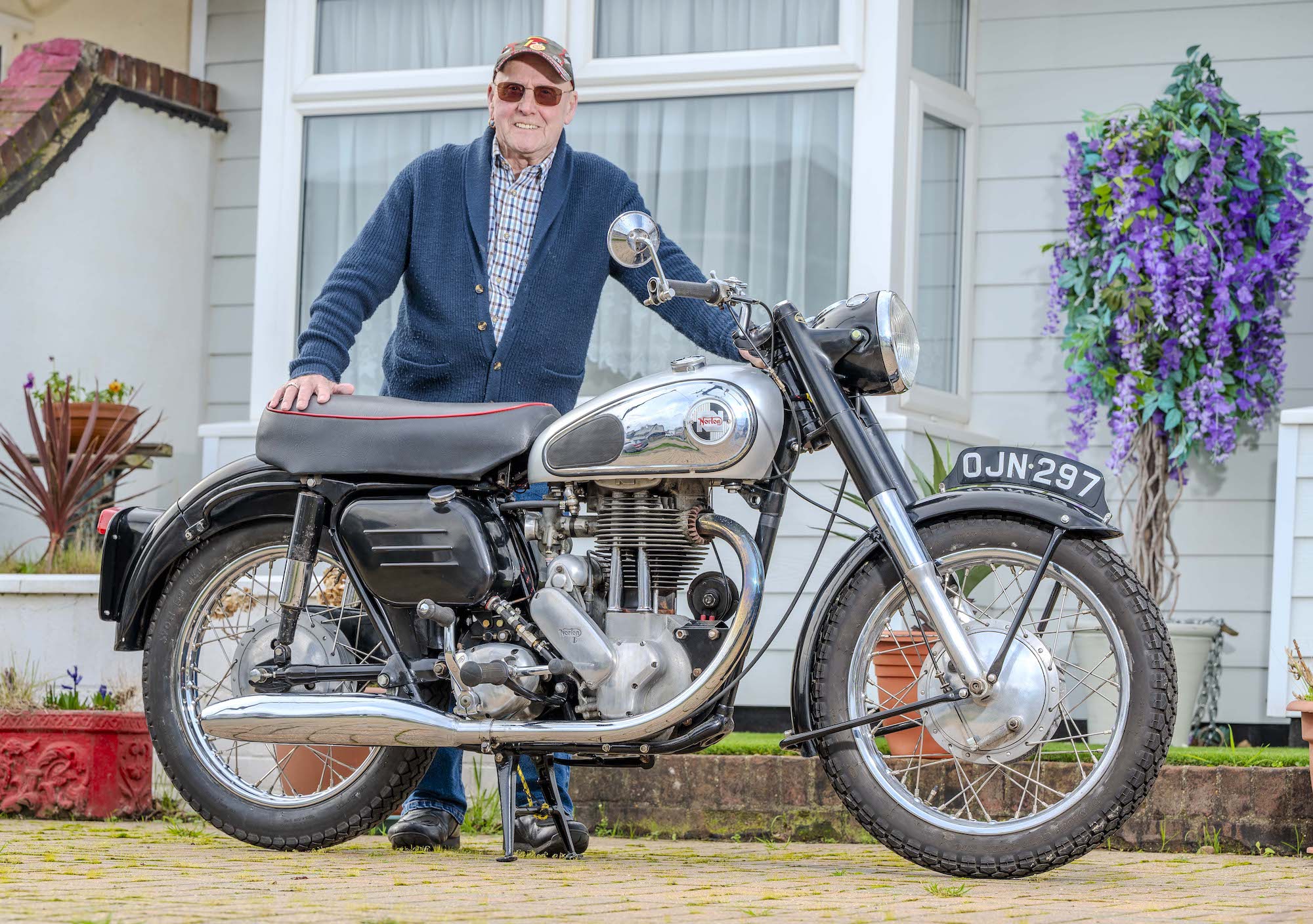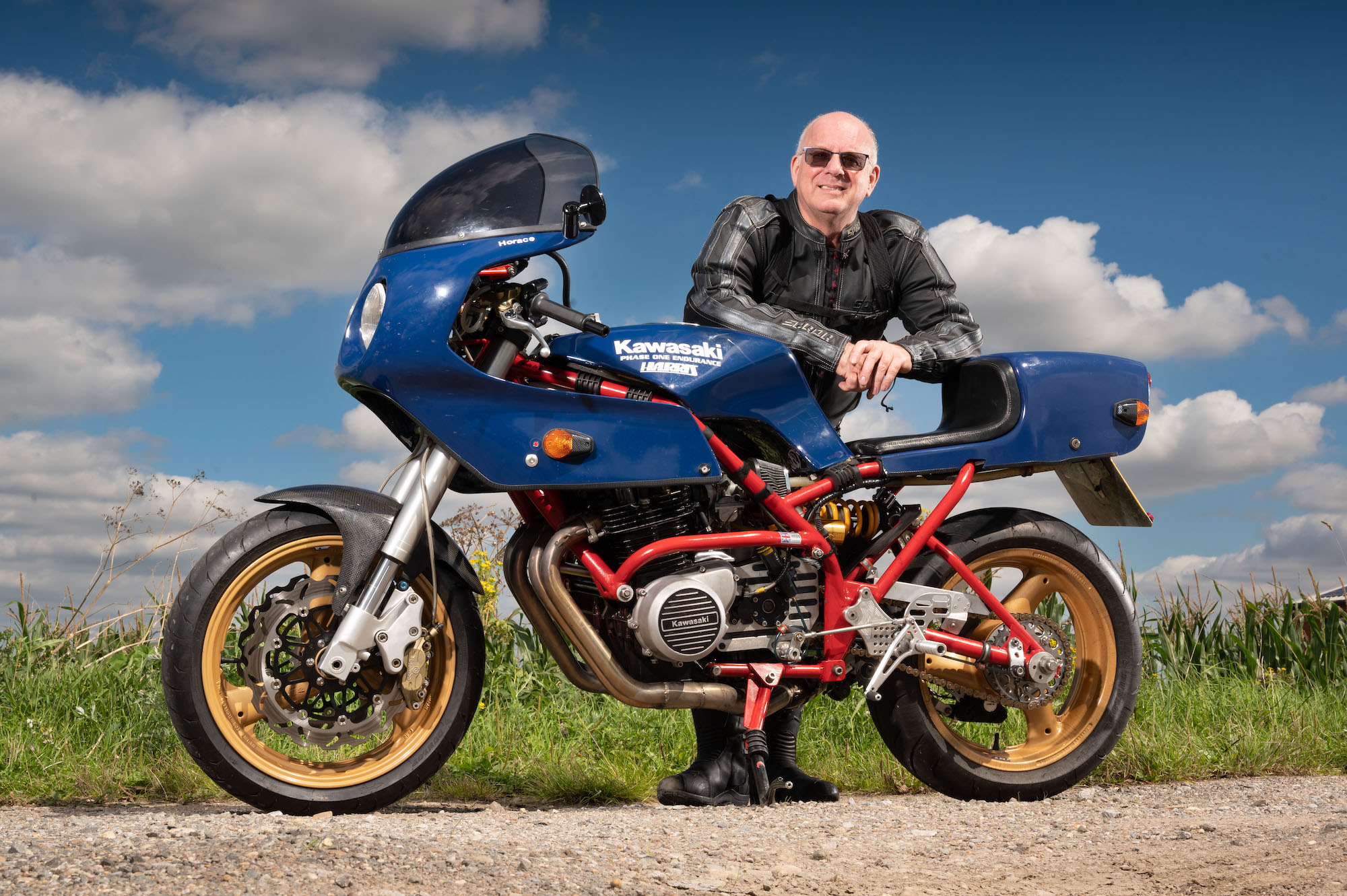In his younger days, before family and business kept him firmly rooted in his native Surrey, Nigel Jeffries undertook some pretty incredible journeys.
He hitchhiked across Canada, caught the ferry to Alaska, took the Greyhound across America, and spent 10 months returning home from Australia via Everest base camp, a backpack tour through China and a dozen other countries in Asia.
When he returned to the UK for good in October 1983, aged 29, he’d seen more of the world than most people do in a lifetime.
But one of the first things he did, while in the process of setting up a landscape gardening business, was to rekindle his love of motorcycling by buying a 1979 Suzuki GS850G.
And while his subsequent travels on the bike may have been much closer to home than those of his globe-trotting youth, they’ve brought him a wealth of memories he’s still accumulating today.
Suzuki GS850G dubbed “the armchair”
Dubbed “the armchair” by friends because of its comfort and sit-up-and-beg riding position, the remarkably original Suzuki remains an integral part of Nigel’s life after nearly 40 years in regular use.
“It’s an old friend, I know it so well,” he says, explaining why he has no intention of ever selling a bike that’s taken him on multiple trips to the Isle of Man TT and Bol d’Or, as well as regular jaunts to the biker cafes around his Surrey home.
Even when he bought a 2005 Triumph Daytona about eight years ago, it was never as a replacement for his trusty Suzuki.
“How could I get rid of it? I can’t get rid of that,” he says. “It’s fun, it’s freedom, I just love it. I like the look of it – I actually like just looking at it, how sad is that?
“In the early days it brought me freedom, and practicality too in actually being able to get out and about. I love motorcycles, and motorcycle racing, and because I’ve always had that I’ve kept relevant with motorcycling.
“I wish I had a quadruple garage because I’d like to buy – don’t tell my wife this – old bikes, particularly Suzukis and Triumphs.”
Now 66, Nigel cut his biking teeth as a 16-year-old on a 50cc Suzuki, graduating to a 250cc BSA Barracuda with a megaphone exhaust, passing his test on a friend’s temperamental Barracuda when his own threw a rod the night before.
Passing the test on a BSA Barracuda
“I said to the examiner I’d had to borrow this bike because mine blew up,” he remembers. “He said ‘is it roadworthy’? I thought ‘I think it is’, so I said yes, but the thing kept cutting out and I had to keep revving it. But I passed my test…
“I then bought a one-year-old Daytona, but within a year of ownership I had smoke coming out of the breather pipe. It obviously had a problem so I sold it and, because I went to college and travelled, I didn’t have a bike until I got the GS850.”
After completing an HND in commercial horticulture at college in Chelmsford, Nigel embarked on his travels, setting off for Canada in 1977.
“I picked tomatoes and tobacco in Ontario, hitchhiked across to Vancouver and got a job as a landscape gardener, then from there took the ferry up to Alaska in January, when you get about two or three hours of daylight,” he says.
“I then took several trips on Greyhound buses, seeing America, and went to the Daytona 200 in 1978 when Kenny Roberts won on the Yamaha.”
Returning to the UK, Nigel worked for a year in landscaping before heading to Australia for nearly four years, a 10-month odyssey of a return journey taking in India, Pakistan, Sri Lanka, Bali, Indonesia, Thailand, Malaysia, Bangladesh, and Nepal, where he walked up to Everest Base Camp.
Flying into Hong Kong, Nigel headed to Japan, Taiwan and China, where he was one of the first to backpack through the country without a mandatory tour guide.
Borrowing and hiring bikes around the world
“I’d get off a bus or train, obviously Caucasian, big ears, big nose, not a lot of hair even then, and people just stare at you, so that was interesting,” he says, hopping on to the Trans Mongolian Express from what was then Peking, now Beijing, to Moscow and back to Europe.
“I sent a card back from Beijing to my brother saying ‘I’m going to order a single to Sunningdale from Beijing’, and I ultimately took a succession of trains back to Sunningdale station near here.”
Nigel was without a bike of his own throughout his travels, but he didn’t stop riding entirely.
“I rode a little bit, borrowing or hiring bikes where I could,” he says. “I remember once in Malaysia I was on the east coast and these lads had what I think was a 125 Suzuki Stinger.
“I said ‘could I hire that for a few hours?’, and to my surprise for what I thought was not a lot of money, and what they might have thought was a lot of money, they let me hire it for half a day.
“I flew along the east coast, up and down, no helmet, and came back totally red-faced because I was sunburned, and had a great time.”
Finally back in the UK for good, Nigel set about building up a landscaping business, and decided that buying a bike was probably now or never.
It’s now or never
“I thought if I don’t buy another bike now, bearing in mind I was going to set up a business, I’d never buy another bike because I won’t be able to justify it,” he says.
“And indeed that’s been the case, I got married and had three children, and it’s only in the last few years I’ve bought myself another bike because until then I couldn’t justify it.”
Nigel met his wife, Mary, in 1987, the couple marrying three years later.
“I had the Suzuki when I met her and I think I said to her if the marriage goes wrong I keep the bike, and she quotes it to me on many occasions, as a joke,” he says. “I have to say the marriage hasn’t gone wrong and we continue to be very happily married!”
Nigel paid £1,500 for the five-year-old bike, but admits he wasn’t specifically looking for a Suzuki, let alone a GS850.
“I just wanted a bike, and this one came up and was nearby and I thought ‘I like Suzukis, I’ve always liked Suzukis,’ so I bought it,” he explains.
“I hadn’t ridden an awful lot for the best part of 10 years, but biking gets in your blood.”
The GS850G was aimed squarely at the touring rider, effectively a bored-out GS750 four-cylinder motor, altered to incorporate a shaft drive and placed in a modified GS1000 frame, with softened hydraulic suspension for a plusher ride.
Apart from company vans and trucks, the bike was Nigel’s daily transport, and he was pleasantly surprised at the reaction from customers when he turned up to provide quotes for work.
“In the blood”
“When I started the business, particularly in the summer on a Saturday, when a bike was actually practical, I would arrive at some sites to give a quote for domestic garden construction, and I thought ‘crikey, how will these people view a bloke turning on a black motorcycle?’” he says.
“But generally speaking, most blokes would say ‘that’s interesting, what’s that?’ I’d tell them what it was and they’d say ‘Oh yes, I used to have a BSA something or other in the 50s’.
“It actually just confirmed that, even if people only had one bike, it got in your blood and often it was the start point of a conversation about motorcycles with people you thought would never have had a motorbike. It turned out to be practical for business and not a stumbling block.”
It also fulfilled its function as a touring bike, carrying Nigel, and sometimes Mary, to the Isle of Man TT, where Mad Sunday gave him the chance to thoroughly put the Suzuki through its paces.
“When I first rode on Mad Sunday with my mates I thought ‘well, they’ve got sports bikes so I’m not going to be very fast here’,” he remembers.
Putting the GS850G through its paces on Mad Sunday
“We were pootling along on the first lap, and I thought ‘well they’re not going that fast I’ll open it up a bit, they’ll come blasting past’, but to my surprise, they didn’t.
“It was only on the mountain section where horsepower counted. Actually I thought ‘this bike and I can hustle it quite well on the twisty bits’, it’s when you need horses that it loses out.
“Obviously, as time went on, bikes got bigger and faster and it was hopelessly lost.”
It was on the TT course that the bike got its nickname.
“One of my mates had a Suzuki GSXR750, and I blasted that round the island for a lap or two, and he had my GS850,” says Nigel.
“He got off grinning and laughing and said ‘it’s like riding an armchair’, and since then they’ve called it ‘the armchair’. That’s what it’s like, a very soft old cruiser, very comfortable and pleasant to ride, but it will go round bends pretty well really.”
As well as his trips to the island, Nigel and his mates rode to the German Grand Prix at both Hockenheim and the Nurburgring, as well as the Bol d’Or at Circuit Paul Ricard near Marseille.
Monsoon at the Bol d’Or
The 1988 running was one of the wettest on record, and the writing was on the wall for Nigel and co as they battled monsoon conditions on the ride through France.
“It bucketed – it was awful, horrendous riding,” he remembers. “It was scary, you’d go past lorries, not actually being able to see your way past them, and thinking ‘right, I can’t see any oncoming lights, we’ve got to go for it’, and we would just open it up and blast by. We all survived, the three of us.
“We got down to Marseille and I remember the sun was shining and it was quite nice, but then we went up to the Paul Ricard Circuit, which I think is up in the mountains a bit. It started off fine, but overnight it started raining again, the track was flooded and they stopped the race.”
Riding home was “just as awful”, hindered further by an issue with Nigel’s bike.
“I had new contact breaker points put on at the service before I went, and coming back the bike broke down,” he says.
“Fortunately my insurance took us to the nearest Suzuki dealer and put us up for a night or two in a hotel. It turned out the new contact breaker points had broken.”
Into the 1990s, and Nigel’s touring was somewhat curtailed by the birth of son Niall, and daughters Ella and Adelle, combined with a growing business.
“I still rode regularly and the Suzuki would always be taken out,” he says, a situation that didn’t change even when the much faster Daytona came along.
Enter the Daytona
“My excuse to my wife was that I was finding it hard to get parts for the GS. I needed an exhaust and other things, and always fancied a racing style bike rather than a sit up and beg tourer.
“I was driving along past Bulldog Triumph in Winnersh and they had this red Daytona outside. I’d always fancied a British bike, liked supporting British manufacturing, and thought Triumph had done a pretty good job of resurrecting the name. It just ticked all the boxes.
“The 850 is an easier bike to ride, much easier around town, while the Daytona is less comfortable when pootling around, but it gets more comfortable on a fast long run.
“It’s much more accomplished, it sticks to the road much better, it’s a bike that’s 30 to 40 years younger and it shows.”
Most of the friends Nigel toured with in the 1980s and early ‘90s have divested themselves of their bikes, and the Suzuki is mostly ridden in dry weather, either to race meetings or to biker cafes like Loomies on the Meon Road or Jacks Cafe on the A30.
“Lots of old bikes go down to Jacks, and it always draws interest from people who know about bikes,” he adds.
Nigel is still on the lookout for a genuine left-hand exhaust to replace the ailing original and, apart from the front mudguard, replaced about 30 years ago, everything on the bike is as it left the factory barring wear and tear on things like tyres and brakes.
“I know I can get a new exhaust from Holland for €500, but that’s a bit much!” he laughs. “If I could renew that then that would last 20 to 30 years and see me out.
“Fun to ride”
“It’s still fun to ride, I enjoy riding it, and it still looks good. I get pleasure out of riding an old bike that’s original.
“I thought about stripping it down and professionally restoring it, but I’m wary of doing it. It looks OK now until you look closely at it. Maybe I’ll take the engine out and have that cleaned up professionally.”
The bike’s immediate future, therefore, lies in Nigel’s continuing care, but what lies in store further down the road? Could Niall, 28, one day take on his dad’s old bike?
“Yes, he could do,” says Nigel. “Both my bikes are willed to him, so I suspect he might want to keep them.
“He doesn’t have a motorbike at the moment, but he loves bikes, he loves motorcycle racing, and he’s threatening to buy a bike.”
As Nigel prepares to fire up the four-stroke engine and head off for our photoshoot, he sums up what makes the GS such a special machine.
“Riding it still excites me,” he says. “I like the shape of it. When you look at bikes that are designed right, they are a bit of a work of art. It’s a well-built bike, the engine is bulletproof, and it’s just a decent bit of kit.
“I think the Suzukis of the ‘60s and ‘70s were quite exciting, from the Hustler 250 and Kettle 750, through to the GS750 and 850 four-strokes, they just got it right.”
And with that, the engine thrums to life and we’re off into the weak January sunshine.
